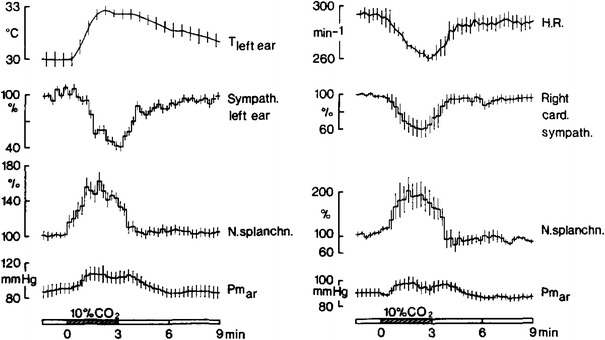Fig. 7.

Average differential cutaneous (sympath. left ear), cardiac (right card. sympath.) and visceral (N. splanchn.) sympathetic activities (shown as percent changes, relative to average pre-stimulation activities, after analog integration of sympathetic discharges) in rabbits after sino-aortic denervation and vagotomy to eliminate peripheral chemoreceptors and arterial baroreceptors. Animals (two series with n = 6) were anesthetized and artificially ventilated under neuromuscular blockade. Shown are changes of regional sympathetic activities in response to ventilation with 10 % CO2 in 21 % oxygen and 69 % nitrogen (black bars). The differential sympathetic response pattern during hypercapnia is qualitatively identical with those during asphyxia or arterial hypoxia. Its induction must be attributed to medullary CO2 or pH chemoreceptors. Further shown are ear skin temperature (T left ear) and heart rate (HR) which change according to the changes of regional sympathetic innervation. Mean arterial pressure (Pm ar) rises during hypercapnia. From Simon and Riedel [76]
